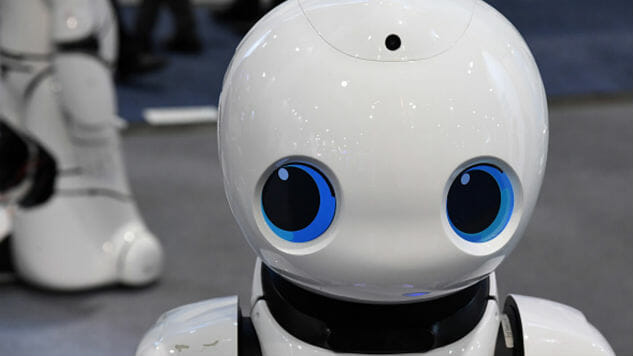Why We Put Cute Faces on Robots
Photo by Ethan Miller / Getty Images
A heavy rain is falling on the glass windows of the JW Marriot Hotel. It’s South By Southwest and Rob High, Chief Technology Officer for IBM’s Watson Solutions, is explaining how AI is here to serve humankind. He repeatedly emphasizes that Artificial Intelligence exists “to amplify human cognition to augment human intelligence.” It exists for us.
IBM’s Watson, is a form of AI.
“Watson is not singular,” High explained in his earlier panel, “Mythbusters: How IBM Watson Really Works.” Watson uses what it calls “deep natural language processing” to seek answers among quantities of unstructured information.
“It’s an underlying code that implements the algorithms of reasoning and recognition to find answers among all that information.”
High explains that AI like this exists to “find ways of helping people better at what they do, which would be hard to do without the benefit of AI.” He sees AI as a way to connect human intelligence.
“When you look at it in terms of the magnitude of data that’s being produced and how fast that’s growing and how many different perspectives really ought to be considered when making a decision.”
In a world of virtually limitless relevant data, it seems foolish not to take advantage of the many perspectives available. However, one single person has little chance of being able to properly access all that data. High describes it as follows: “If we were in a world where we could perfectly interact with, you know, hundreds of thousands of other people for every topic that we cared about, for every decision that we wanted to make, then perhaps we wouldn’t need a cognitive system to assist us.”
However, the cognitive system can assist us. It can shorten the distance between the human desire for easy access to other human knowledge my facilitating the retrieval of that information. When IBM’s Watson won Jeopardy, it was doing just that—acting on human desire to retrieve human knowledge.
High explains that, in the end “AI will only be a subset of human intelligence.” We shouldn’t worry about being compared to Watson. High states “It’s not going to be relevant for us to say ‘well that AI system’ you know has an IQ of 10000 because that presumes that it’s on the same path of measurement that humans would measure their own human intelligence with.“ The AI is a tool for humans to interact with and use.
Kate Darling, a Research Specialist at the MIT Media Lab, sees the power of putting a face on AI.